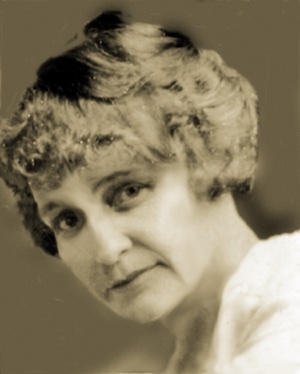I once asked my dad to tell me what he remembered about his grandmother. He squinted his eyes, trying to resurrect a memory of her that would satisfy his inquisitive daughter. My father was only six when his grandmother died in Denver, Colorado, so I wouldn’t have blamed him if he had no mental image of her. I suspect he only saw her a time or two, if that. However, after a time, my father looked at me and said, “I recall her having black hair sprinkled with grey. Wore it short. I’d say she was about 5’2” and stout. And it seems like she was a good cook.” I’ve since wondered if he actually remembered these things about her, or he picked them up from a conversation he once heard. Regardless of the source, I’ve held onto these tidbits to help humanize a woman I know little about.
My great-grandmother, Emma Merkt, was born in Coffeyville, Kansas, on November 27, 1873, one of seven children born to German immigrant parents, John Georg (John) and Christina (Baier) Merkt, who had come to America when they were teenagers. Emma spent her first 13 years on a Kansas farm, like Dorothy in “The Wizard of Oz.” Her father’s obituary states that he was a missionary for the Lutheran Church, so religion must have played an important role in their family life.

Emma Merkt (1873-1937)
Before medical research discovered the cause and cure of diseases like malaria and typhoid fever, these illnesses frequently swept through Midwestern communities at certain times of the year, taking the lives of young and old and devastating families. Such was the case when, in the fall of 1886, Emma’s mother succumbed to typhoid fever at age 44. It’s not difficult to imagine the loss a thirteen-year-old girl would have endured losing her mother at that critical time in her life. Emma had at least five siblings, two sisters who were 15 and seven when their mother died, and three brothers, aged 21, 19, and 15 at the time. Emma’s father may have felt the need to start afresh after his wife’s death and business opportunities elsewhere may have promised a better future for his family than farming. Whatever the reason, John abandoned the farm and departed for Colorado, where gold and silver mining and the booming railroad industry were attracting settlers from all over the country. Emma and two of her siblings accompanied their father in a covered wagon to Chaffee County in southern Colorado. It’s possible they may have lived in the wagon for a time until they could find a suitable place to live. John eventually became a patent medicine salesman, a popular and sometimes lucrative trade in that day, though considered more of a shady occupation as the medical profession and pharmaceutical industry developed. Continue reading